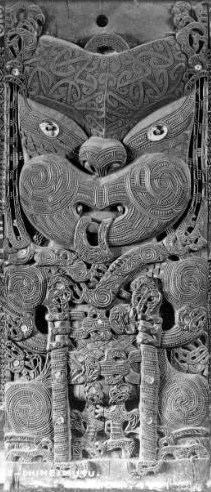 | ||
Toi whakairo (art carving) or just whakairo (carving) is a Māori traditional art of carving in wood, stone or bone. Wood was formed into houses, fencepoles, containers, taiaha and tool handles. Stone, preferably the very hard pounamu (greenstone), was the chief material for tools of many kinds. Bone was used for fish hooks, needles etc. Following the introduction of metal tools there was a substantial increase in decorative ornamentation, particularly in wood and bone carving.
The Māori Arts and Crafts Institute at Whakarewarewa in Rotorua is a stronghold of traditional carving skills. Hone Taiapa was head of this school for some time. Since the Māori Renaissance there has been a resurgence of interest in whakairo, alongside other traditional Māori practices, with a much greater integration with mainstream contemporary art. The Māori Art Market (funded by the state-sponsored Toi Māori Aotearoa) is a significant venue for the promotion and sale of whakairo.
Many carvers express their practices in explicitly spiritual terms.
Notable carvers include
Te Papa and Auckland Art Gallery have substantial holdings of whakairo, with Te Papa in particular having many digitised in their Collections online website.
